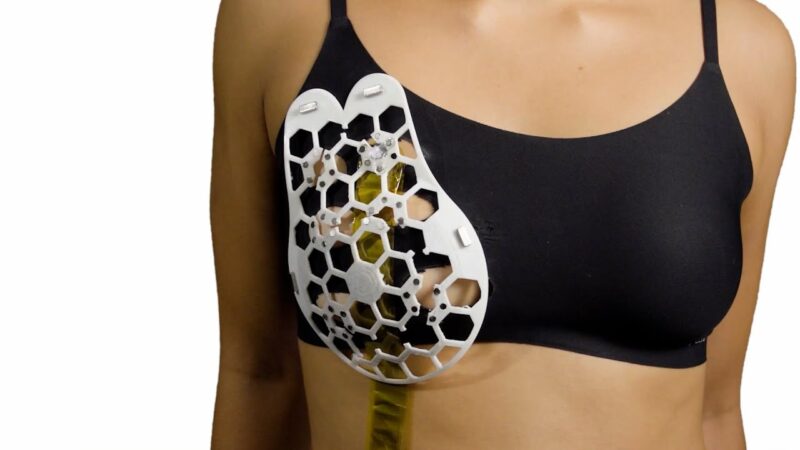
Researchers from the Massachusetts Institute of Technology (MIT) have developed a wearable ultrasound device aimed at enabling early tumour detection.
The device is especially beneficial for individuals with a high risk of breast cancer between regular mammograms, said the American research university located in Cambridge.
According to MIT, when breast cancer is diagnosed in its earliest stages, the survival rate is nearly 100%, whereas detection in later stages reduces the rate to approximately 25%.
The researchers designed the device as a flexible patch that can be affixed to a bra. This enables the wearer to slide an ultrasound tracker along the patch and image the breast tissue from various angles.
A recent study by the MIT scientists demonstrated that the ultrasound images obtained have a resolution comparable to those acquired with ultrasound probes typically utilised in medical imaging centers.
MIT media lab associate professor and senior author of the study Canan Dagdeviren said: “We changed the form factor of the ultrasound technology so that it can be used in your home. It’s portable and easy to use, and provides real-time, user-friendly monitoring of breast tissue.”
The findings of the study appeared in the Science Advances journal with the lead authors being MIT graduate student Wenya Du, Emma Suh ’23, research scientist Lin Zhang, and Dabin Lin, a professor at Xi’an Technological University.
Dagdeviren’s vision of a diagnostic bra was turned into a reaility through a miniaturised ultrasound scanner enabling users to perform imaging whenever necessary. The scanner employs ultrasound technology akin to medical imaging centres but I said to incorporate a novel piezoelectric material for miniaturisation.
To make the device wearable, a flexible, 3D-printed patch with honeycomb-like openings was designed and can be attached to a bra using magnets, allowing the ultrasound scanner to contact the skin.
The researchers are developing a miniaturised version of the current ultrasound imaging system, which will be about the size of a smartphone.
The wearable ultrasound patch can be reused multiple times and is intended for use at home, particularly by individuals at high risk for breast cancer, who may benefit from frequent screening. Additionally, it can aid in diagnosing cancer for those who lack regular access to screening facilities.
The research was partly financed by the National Science Foundation, the Sagol Weizmann-MIT Bridge programme, a 3M Non-Tenured Faculty Award, and MIT Media Lab Consortium Funding.




